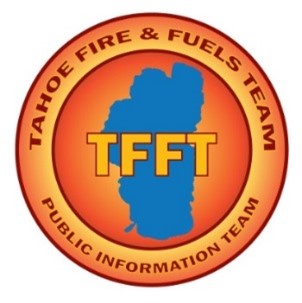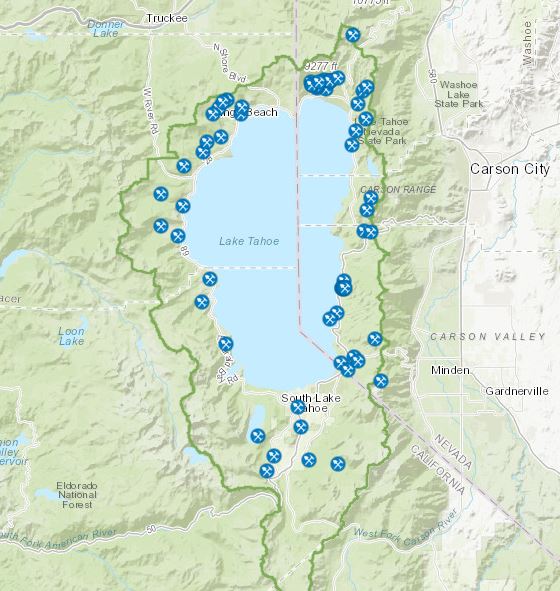Forest thinning projects underway at Lake Tahoe

Contact: USDA Forest Service, Lisa Herron 530-721-3898 or
LAKE TAHOE, Calif./Nev., July 23, 2024 – Tahoe Fire & Fuels Team (TFFT) forest thinning projects are underway in the Lake Tahoe Basin. These projects are expected to continue for the next several weeks with some projects continuing through the fall, conditions and weather permitting. For project details, including the lead agency, start date and expected duration, view the Forest Thinning Projects Map at Tahoe Living With Fire which highlights current and upcoming projects.
After decades of fire suppression, Tahoe Basin’s forests are overstocked and highly vulnerable to insects, disease, and catastrophic wildfire. Forest thinning projects are a vital forest management tool used by land managers to help protect communities by removing excess vegetation (fuels) on public lands that can feed unwanted wildfires. These projects complement defensible space and home hardening efforts on private property in neighborhoods and communities. Forest thinning also contributes to improved forest health, wildlife habitat, and watershed and forest resilience in the face of climate change.
These projects improve forest health by thinning trees in dense areas, which reduces competition for water, sunlight and nutrients and allows remaining trees to thrive. Thinning also decreases the potential for spreading tree diseases and insect infestations such as white pine blister rust, dwarf mistletoe and bark beetles.
Forest health is a top priority of the Lake Tahoe Environmental Improvement Program (EIP), a landscape-scale collaboration and partnership between nearly 80 public and private organizations to achieve the environmental goals of the region. To date, partners have treated nearly 95,000 acres in Lake Tahoe Basin forests to reduce hazardous fuels.
Land managers use different methods during forest thinning treatments that include mechanical and hand thinning. Mechanical thinning utilizes heavy equipment to remove trees and most of the excess vegetation while hand thinning is accomplished by hand crews using chainsaws to remove trees and pile excess material for burning after the piles dry which may take two to three years.
Mechanical thinning sometimes requires the closure of an area during operations due to the hazards posed by heavy equipment and falling trees. Hand thinning generally does not require project area closures. Mechanical thinning is used wherever slope and road access allow and hand thinning is typically used in urban areas, where only smaller trees and brush need to be removed or where equipment access is restricted, often on steep rocky slopes.
Short-term effects of forest thinning projects include temporary impacts to recreational areas and changes to the appearance of Lake Tahoe Basin forests. Treated areas may look disturbed immediately after treatment, when fresh stumps, equipment tracks, freshly chipped or masticated vegetation, or burned areas are more visually obvious. These areas recover quickly and improve ecologically as new vegetation growth occurs within a few years. Similar short term visual impacts can occur after prescribed fire treatments, but these areas also recover quickly.
Thinning operations typically take place in the summer and continue into fall as conditions and weather allow. However, some operations may be implemented over the snow when conditions permit. In addition, some small, isolated thinning projects may be conducted on short notice and may not appear on the map due to the small window of opportunity to implement these projects.
For completed forest thinning projects, view the Forest Vegetation Interactive Map that highlights forest thinning treatment accomplishments of the TFFT and the EIP.
Learn more about living in fire-adapted ecosystems, forest thinning and prescribed fire at Tahoe Living With Fire and get prepared, get informed, and get involved!
###
